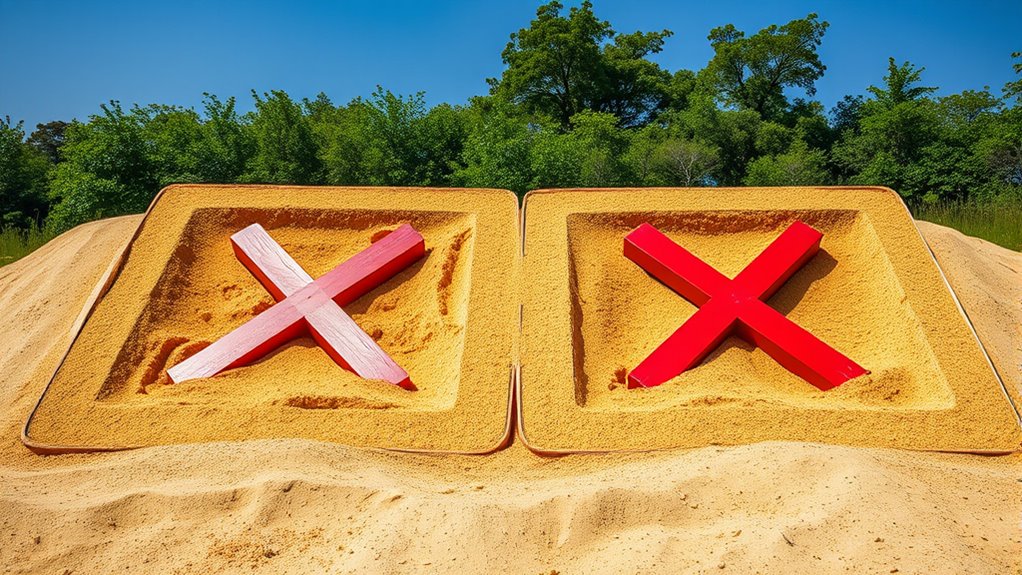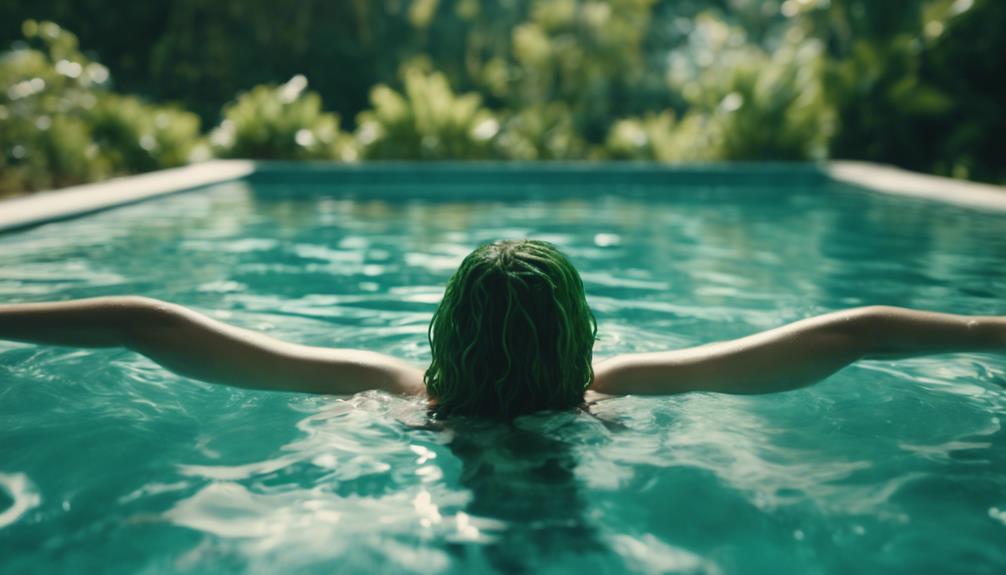To create a DIY giant sand tic-tac-toe board, gather materials like a large flat outdoor area, stakes, string, gravel, shells, painted rocks, and weatherproof paint. Measure and mark a grid with string or chalk, then carve or outline the lines in sand. Prepare game pieces by painting rocks or shells in contrasting colors. Regularly maintain the board and pieces for durability. Keep exploring for detailed steps to build a fun, lasting game setup.
Key Takeaways
- Gather materials like stakes, string, rocks, and chalk to outline the grid in a sandbox or outdoor area.
- Use measuring tools to draw a clear, evenly spaced grid with straight lines for proper game layout.
- Mark intersections with stakes or chalk, ensuring the grid is level and accurately proportioned.
- Prepare durable game pieces such as painted shells or stones, sealing them for weather resistance.
- Maintain the board by smoothing the sand, repairing frame parts, and supervising gameplay to ensure longevity.
Gathering Materials for Your Sand Tic-Tac-Toe Game
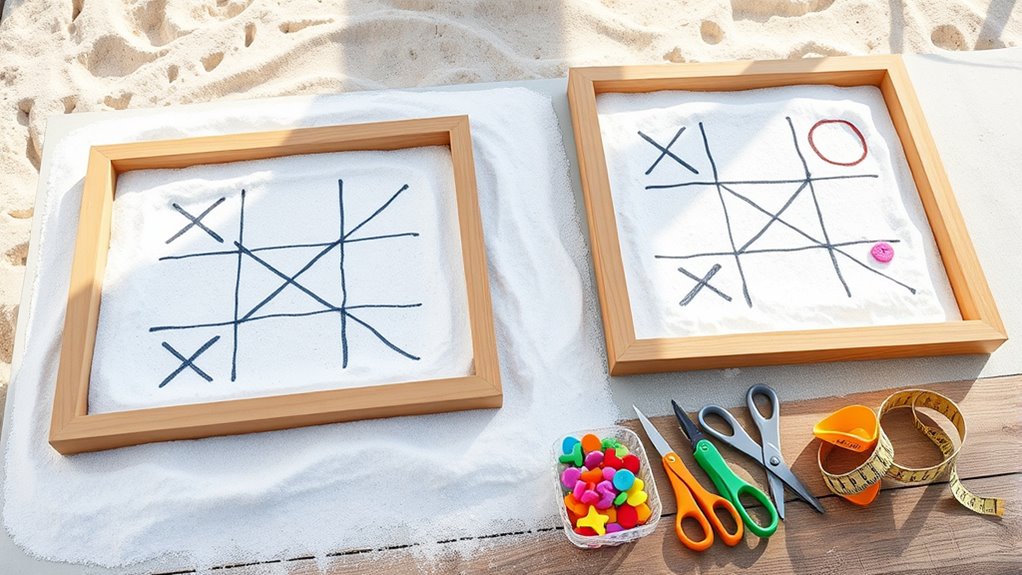
To create your giant sand tic-tac-toe board, start by gathering all the necessary materials. You’ll need a large, flat surface like a sandbox or a designated outdoor area. Get some sturdy stakes or wooden dowels to mark the grid, along with a measuring tape or ruler to guarantee even spacing. You’ll also want a string or chalk to help you draw straight lines for the grid. For the game pieces, gather large, lightweight objects such as painted rocks, shells, or plastic markers that are easy to see and handle. Finally, consider bringing a level or a straightedge to keep your grid even. Having all these materials ready guarantees your project runs smoothly and your game is both fun and functional. Additionally, choosing a flat and stable surface can help ensure your grid remains even and durable during play. Ensuring your construction materials are safe and suitable for outdoor use will also prolong the durability of your setup.
Designing and Marking the Board Layout

Before you start marking your giant sand tic-tac-toe board, it’s important to plan your layout carefully. First, decide on the size of your grid, guaranteeing it’s large enough for players to comfortably see and interact with. Use a tape measure or string to draw two equally spaced parallel lines horizontally and vertically, creating a 3×3 grid. Mark the intersections clearly with chalk or stakes, so they’re easy to identify. Keep your lines straight and even for a professional look. Double-check the spacing to make sure each square is uniform. Proper layout planning ensures your game will be both fun and functional. Additionally, paying attention to precise measurements can help ensure the board’s durability and usability over time. Considering beach conditions, such as wind and moisture, can also help improve the board’s longevity and stability. Incorporating ergonomic considerations can also improve the comfort and ease of play for participants. Ensuring your layout accounts for terrain variability can help maintain the board’s integrity on uneven surfaces. Taking your time now will make the marking process smoother and more accurate.
Constructing and Setting Up the Board in the Sand

Once you’ve marked your grid, it’s time to start constructing the actual playing surface in the sand. Begin by clearing the area within the lines to create a smooth, level surface. Use a rake or broom to remove debris, ensuring the sand is even. Next, outline the grid with a string or garden hose to maintain straight lines. For added definition, you can lightly carve the lines into the sand using a stick or garden trowel. If you want more durability, consider filling the lines with small rocks or shells to keep them prominent during gameplay. Additionally, choosing the right surface material can influence how well the grid holds up under outdoor conditions. Using weather-resistant shelter options like a tarp or portable shelter can help protect your setup from the elements during extended play. Taking into account pinball mechanics such as bumpers and flippers can inspire creative features or obstacles in your outdoor game. Incorporating elements of Juice Packaging and Storage can provide inspiration for creative game accessories or themes. Finally, lightly water the entire area to settle the sand and prevent shifting. To ensure your setup withstands outdoor conditions, consider celebrity transformations that highlight how some celebrities adapt their lifestyles for durability and style. With your grid set, you’re ready to move on to creating your game pieces.
Creating and Preparing Game Pieces
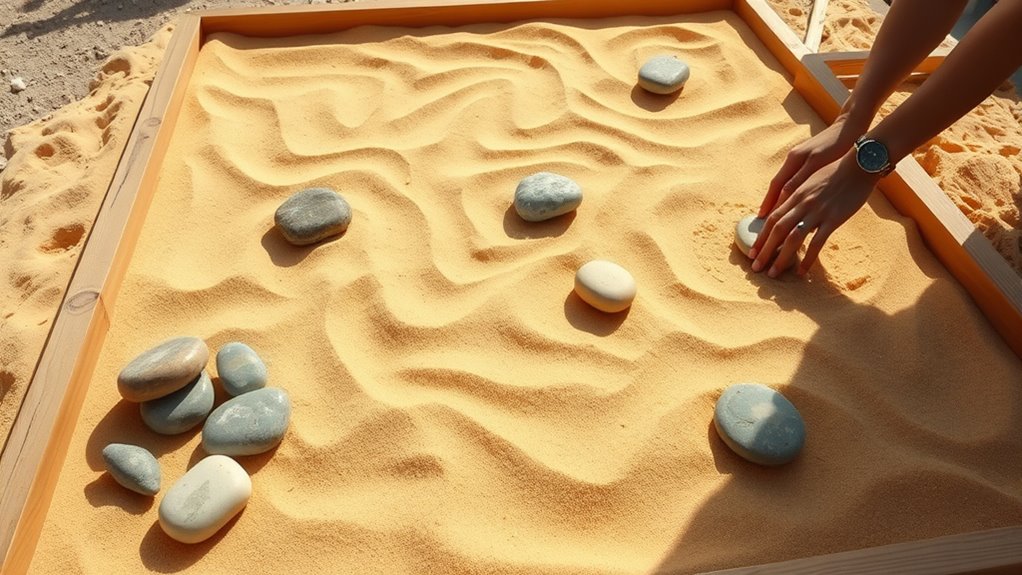
Creating and preparing your game pieces is a straightforward process that adds a personal touch to your giant sand tic-tac-toe. First, choose sturdy materials like large shells, painted stones, or custom molds. Next, clean and dry each piece thoroughly to guarantee paint adheres well. Then, apply bright, contrasting colors—perhaps red for X’s and blue for O’s—using weatherproof paint. To ensure longevity, consider weather-resistant coatings that protect your painted pieces from the elements. Finally, seal the painted surfaces with a clear outdoor sealant to protect against sand and moisture. Regular checks and updates on the game pieces can help maintain their appearance and durability over time security measures. Here’s what you’ll do: 1. Select durable, weather-resistant objects. 2. Clean and dry each piece completely. 3. Paint with vibrant, contrasting colors. 4. Seal the paint for long-lasting durability.
Tips for Playing and Maintaining Your Giant Sand Board
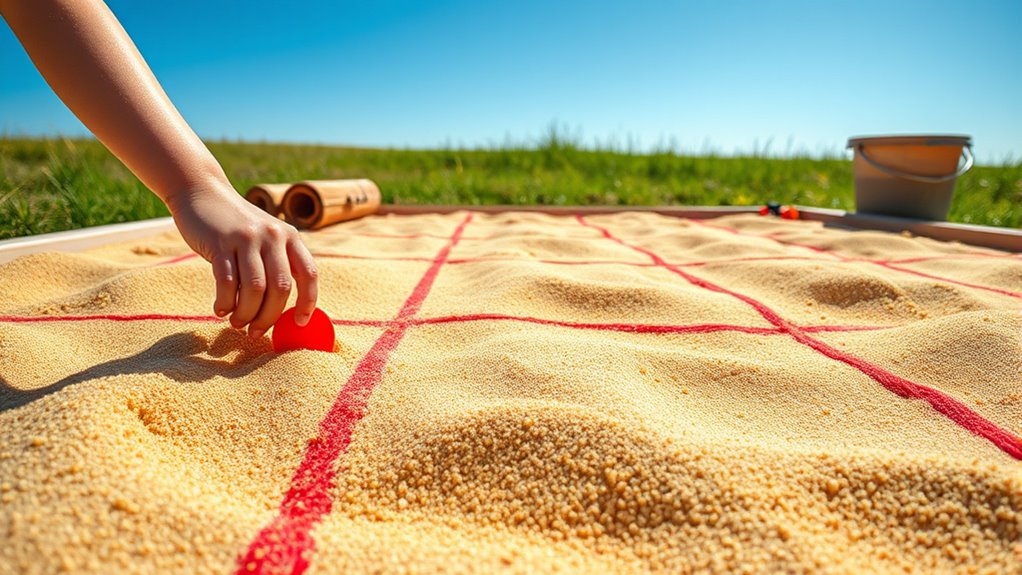
To keep your giant sand tic-tac-toe board in top condition and guarantee fun for everyone, it’s important to follow some simple tips for playing and maintenance. Always supervise players to prevent rough handling that could damage the sand or frame. When playing, encourage gentle placement of game pieces to avoid disturbing the sand surface. After each game, lightly smooth the sand with a rake or your hand to keep the surface even. Periodically, check the frame for any signs of wear or cracks and repair as needed. To prevent excessive erosion, consider covering the board when not in use, especially during bad weather. Regularly removing debris and replenishing sand will maintain a smooth, playable surface. Additionally, understanding the resources and tools available can help you better maintain and enjoy your giant sand board for many seasons. These simple steps ensure your giant sand board stays inviting and durable for countless fun-filled games.
Frequently Asked Questions
How Durable Is the Sand Board in Different Weather Conditions?
Weather conditions can impact the durability of a sandboard. If you use it in rain or high humidity, the sand may clump or wash away, reducing its lifespan. Strong sunlight might cause the board’s materials to weaken over time. To keep it in good shape, you should store it indoors when not in use and avoid exposure to harsh weather. Proper care guarantees your sandboard stays functional longer.
Can the Game Be Played on Uneven or Rocky Terrain?
Playing on uneven or rocky terrain can be tricky, but it’s possible if you make some adjustments. You might need to level the playing surface or create a stable base to prevent the sand from spilling or shifting. Use flat stones or a sturdy board underneath to stabilize the game. Keep in mind, uneven ground can make gameplay less predictable, so be prepared for some challenges and enjoy the fun!
What Safety Precautions Should Be Taken During Construction?
When building your giant sand tic-tac-toe board, you should prioritize safety. Always wear gloves and eye protection to avoid injuries from tools or sharp materials. Work in a well-ventilated area and keep your workspace organized to prevent trips or falls. Use sturdy tools properly, and if you’re handling heavy or awkward objects, ask for help. Taking these precautions guarantees a safe and enjoyable construction process.
How Do You Prevent the Sand From Eroding Over Time?
Your sand game shouldn’t turn into a desert overnight, so to prevent erosion, you need a sturdy border or wall around your board. Compact the sand regularly to keep it in place and consider adding a weed barrier or a layer of gravel underneath. You can also apply a sealant to the surface to help it resist weather. These steps will keep your giant tic-tac-toe game looking fresh for ages!
Are There Eco-Friendly Materials Suitable for Outdoor Use?
You’re wondering if eco-friendly materials can withstand outdoor conditions. Yes, there are options like recycled plastics, biodegradable resins, or sustainably sourced wood treated with eco-safe sealants. These materials resist weathering, erosion, and UV damage better than natural sand or untreated wood. By choosing durable, eco-conscious options, you guarantee your game stays intact while minimizing environmental impact, making your outdoor setup both fun and sustainable.
Conclusion
Now that you’ve built your giant sand tic-tac-toe board, you’re ready for endless fun. Did you know that outdoor games like this can boost your mood and reduce stress? With just a few materials and some creativity, you’ll create a unique, engaging activity that brings friends and family together. Keep your board well-maintained and enjoy countless hours of laughter and friendly competition—making every day at the beach or backyard a little more special.

